The thirteenth annual Flexera 2024 State of the Cloud Report (previously known as the RightScale State of the Cloud Report) highlights the latest cloud computing trends and statistics, including strategies, challenges and initiatives from a broad cross-section of industries and organizations. The cloud computing report explores the thinking of 753 IT professionals and executive leaders from a survey conducted in late Q4 2023 and highlights the year-over-year (YoY) changes to help identify trends. The respondents—global cloud decision makers and users—revealed their experiences with cloud migration, cloud computing and their thoughts about the public, private and multi-cloud market.
Select highlights of the report on cloud computing are included below.
Terminology used:
-
- Large enterprises are public- or private-sector organizations with 10,000 or more employees
- Enterprises are public- or private-sector organizations with 1,000 or more employees
- SMBs are small to midsized businesses with fewer than 1,000 employees
- Organizations refers to the combination of enterprises and SMBs participating in the survey
Managing cloud spending remains the top challenge over security
This marks the second year in a row that managing cloud spending is the top challenge facing organizations. As in previous years, there needs to be more resources/expertise. More than a quarter of respondents spend over $12 million a year on cloud (29%), and nearly a quarter (22%) spend that much on SaaS.
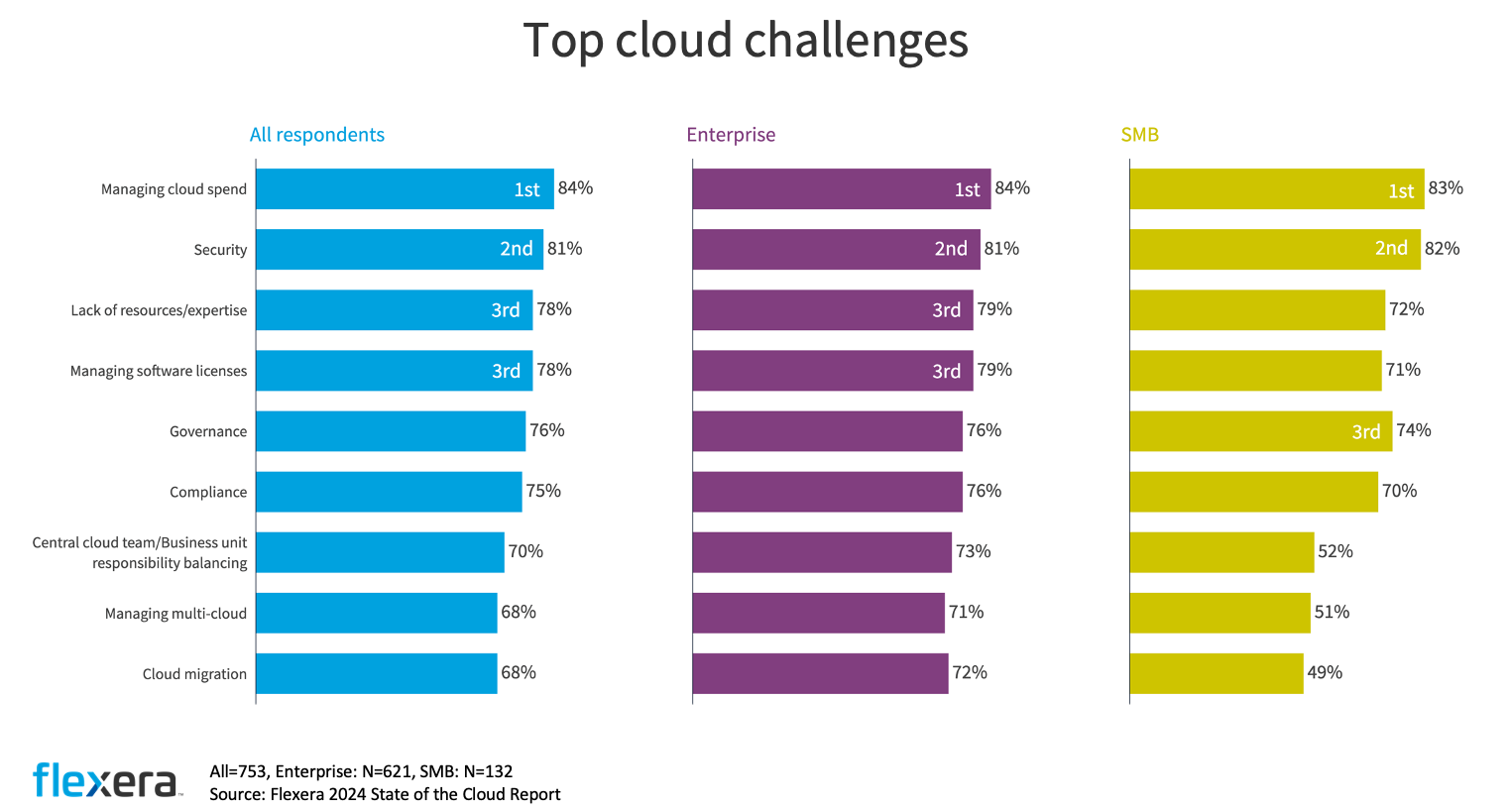
Organizations are embracing multi-cloud
Respondents saw a slight increase in multi-cloud usage, up from 87% last year to 89% this year.
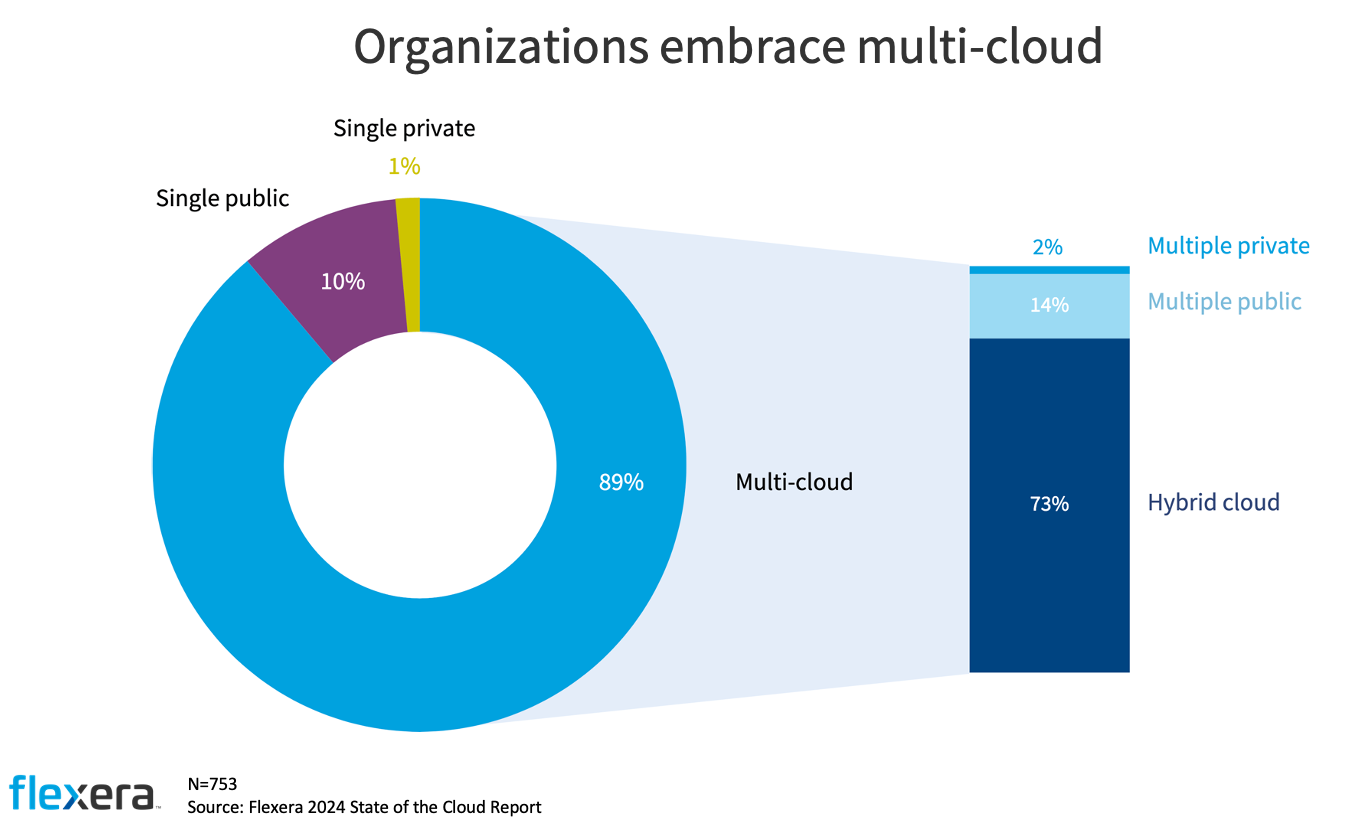
Enterprises turn to multi-cloud FinOps and security tools
Sixty-one percent of large enterprises use multi-cloud security, and 57% use multi-cloud FinOps (cost optimization) tools.
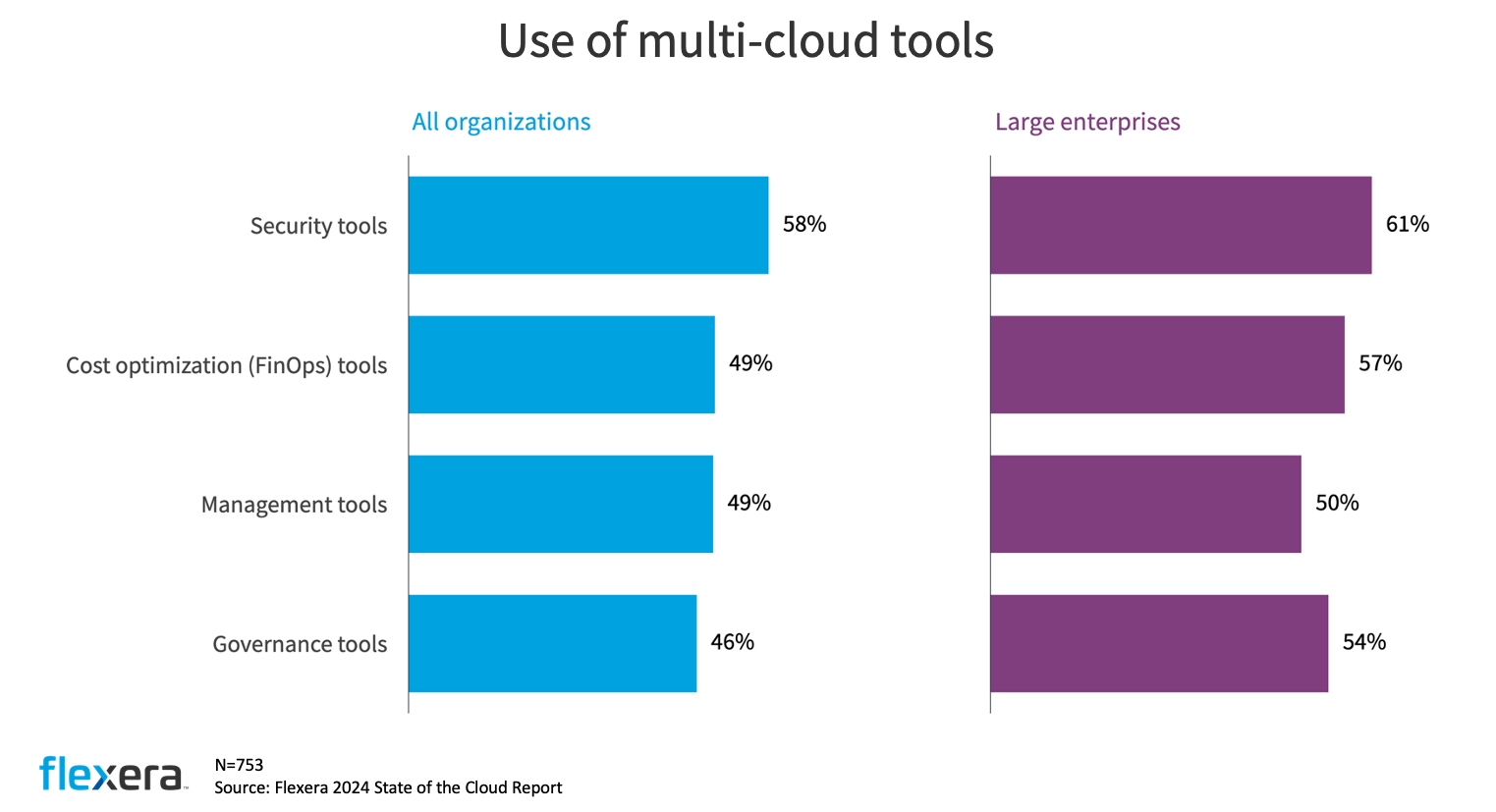
Siloed apps and disaster recovery (DR)/failover are the top multi-cloud implementations
The top two multi-cloud implementations are: apps siloed on different clouds, DR/failover between clouds. Apps siloed on different clouds increased the most (up to 57% from 44% YoY). Data integration between clouds increased to 45% from 37% YoY as organizations looked for the best fit for applications and data analysis.
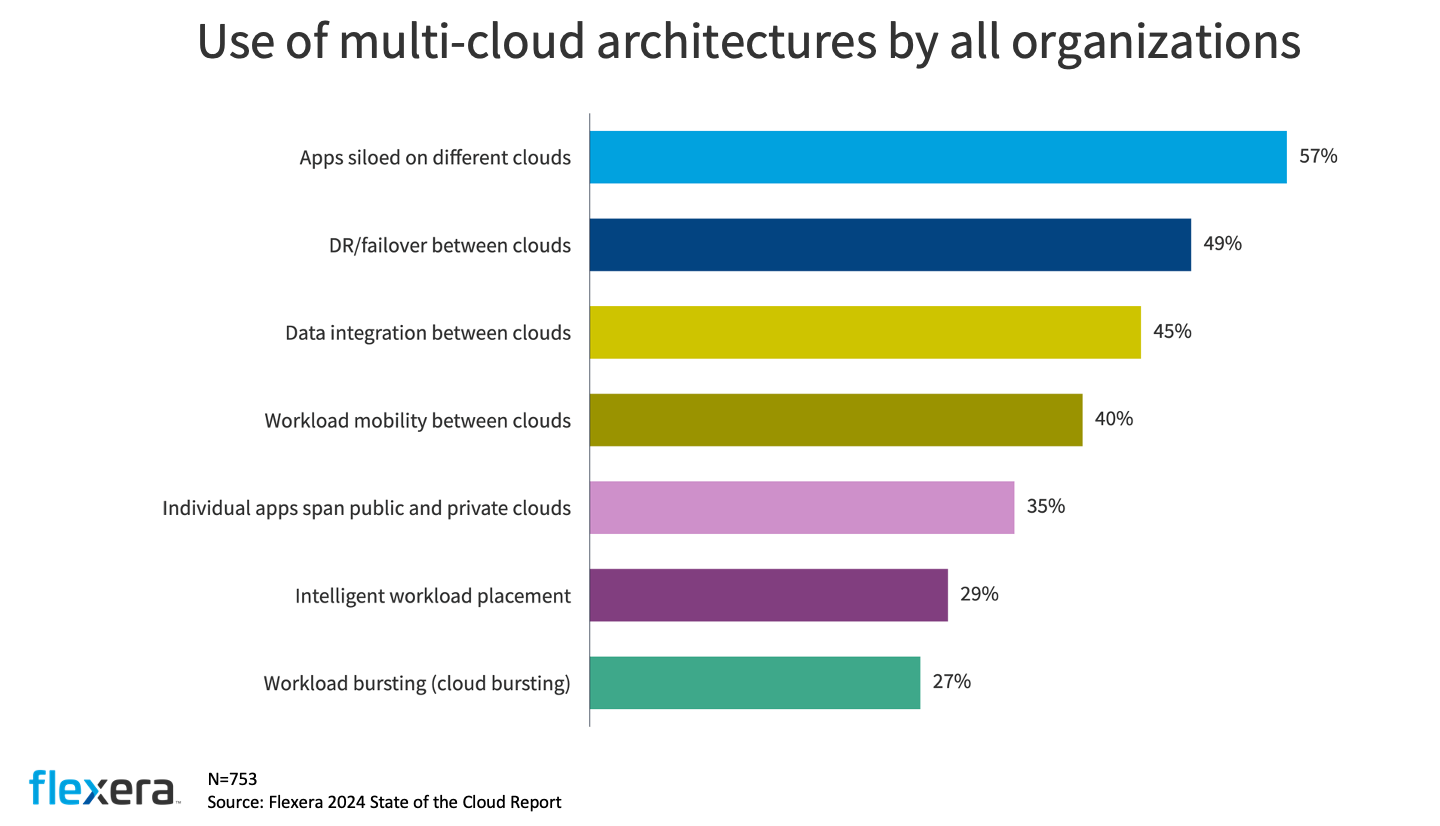
AWS and Azure still lead overall
Adoption grew for Amazon Web Services (AWS), Microsoft Azure and Google Cloud. Forty-nine percent of respondents reported using AWS for significant workloads, while 45% reported using Azure and 21% reported using Google Cloud Platform. In contrast, Oracle Cloud Infrastructure, IBM and Alibaba Cloud usage is substantially lower and relatively unchanged compared to the previous year.
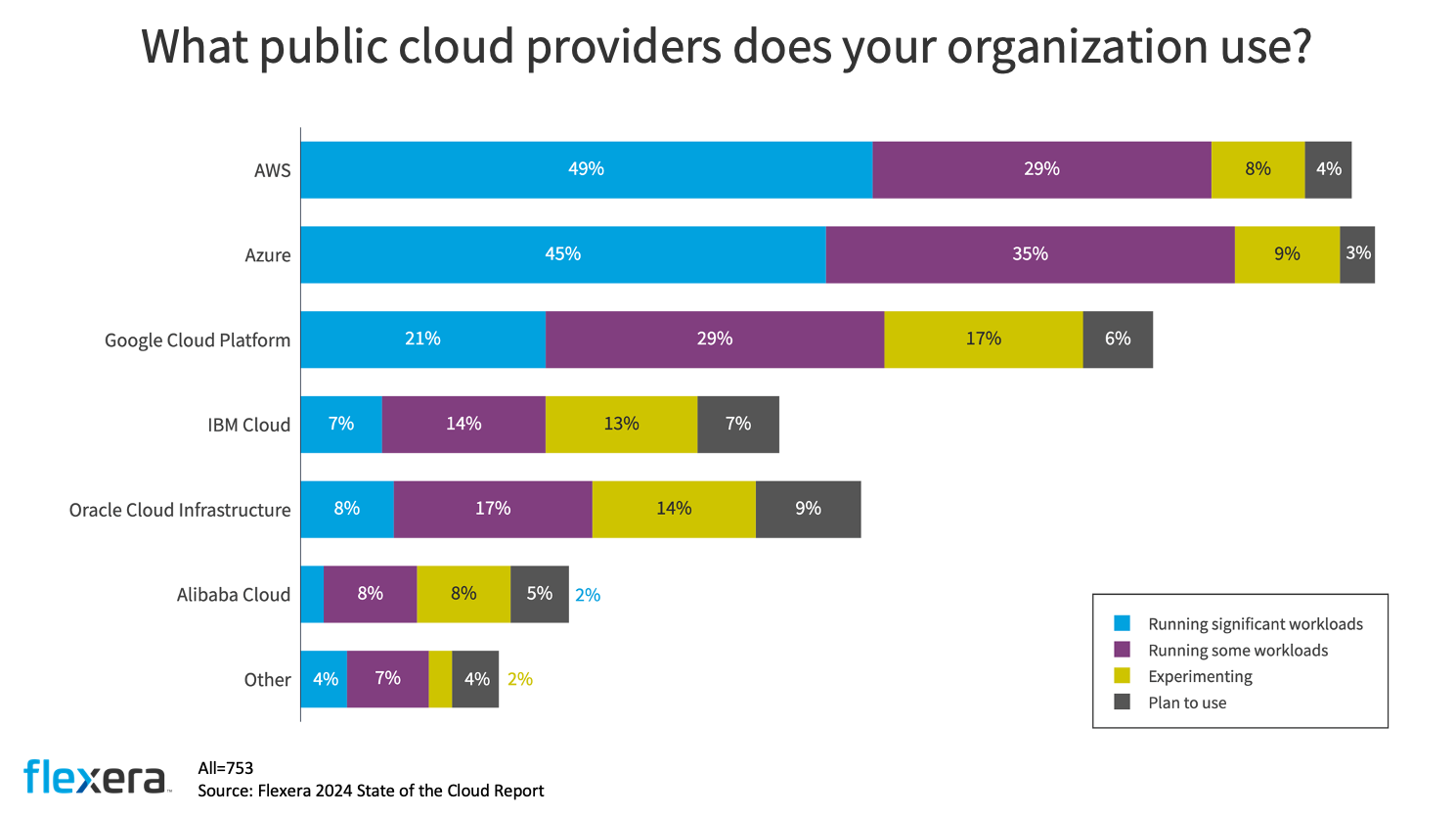
Cloud faces headwinds with small and medium-sized businesses
SMBs are the highest cloud adopters, but fell off slightly from the previous year, with 61% (a drop from 67% last year) of workloads and 60% of data in the public cloud for both years.

There are big plans for AI
Nearly all platform-as-a-service (PaaS) offerings saw a gain in usage, with the most prominent being in the data warehouse (up to 65% from 56% YoY). Container-as-a-service (52%) and serverless (function-as-a-service) (48%) are both up nine percentage points this year. Machine learning/artificial intelligence (ML/AI) had a modest gain at 41%, up from 36% last year. However, ML/AI is the PaaS offering getting the most attention from companies experimenting (32%) or planning to use it (17%).
Cloud Management
Take control of cloud use with out-of-the-box and customized policies to automate cost governance, operations, security and compliance.
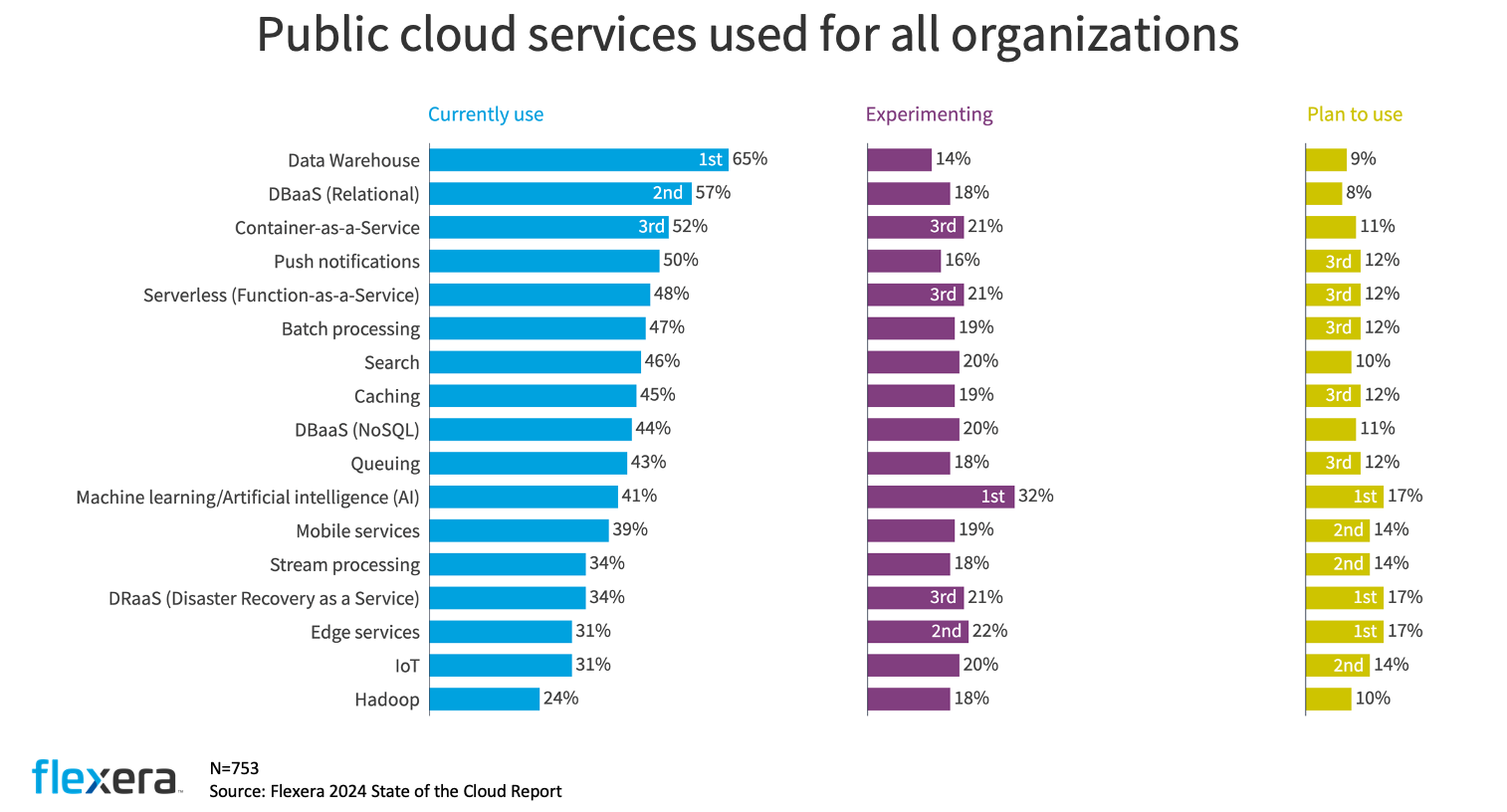
Sustainability trails cost optimization
Forty-eight percent of respondents say they already have defined sustainability initiatives that include tracking the carbon footprint of cloud usage. When asked how sustainability compares to cost optimization, 59% prioritized cost optimization, though an additional 29% say that both cloud cost optimization and sustainability are equally prioritized.
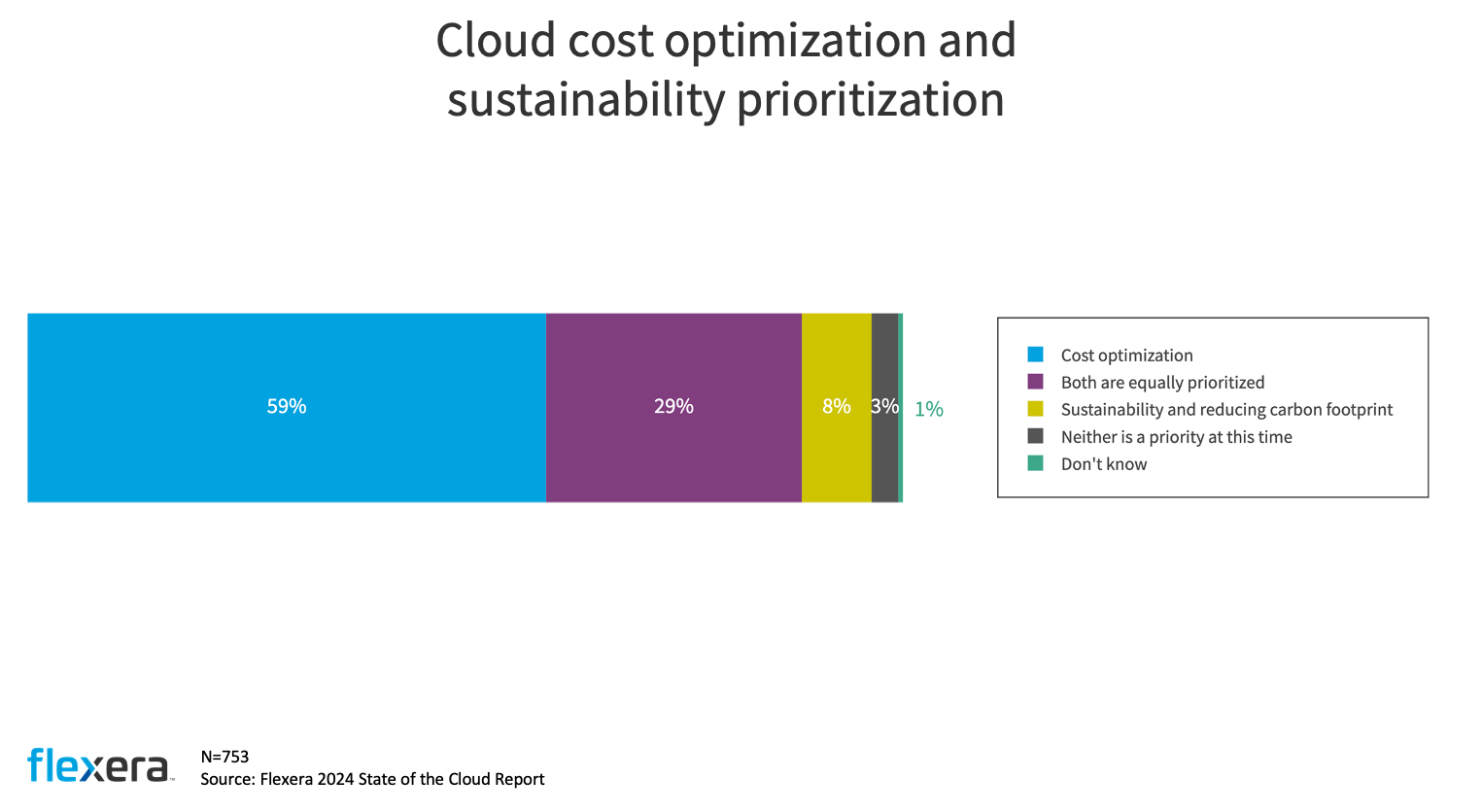
Don’t let economic volatility slow innovation
The world has experienced extraordinary disruption in the past few years, and while organizations of all sizes are prioritizing every dollar of spend, the cloud and technology will weather economic storms. Enterprises that remain focused on digital transformation, seizing new opportunities and evolving strategic initiatives through a cost-conscious lens will be better positioned for success than their competitors.
Get the latest insights in cloud computing trends and cloud migration statistics by viewing the complete survey results here.







